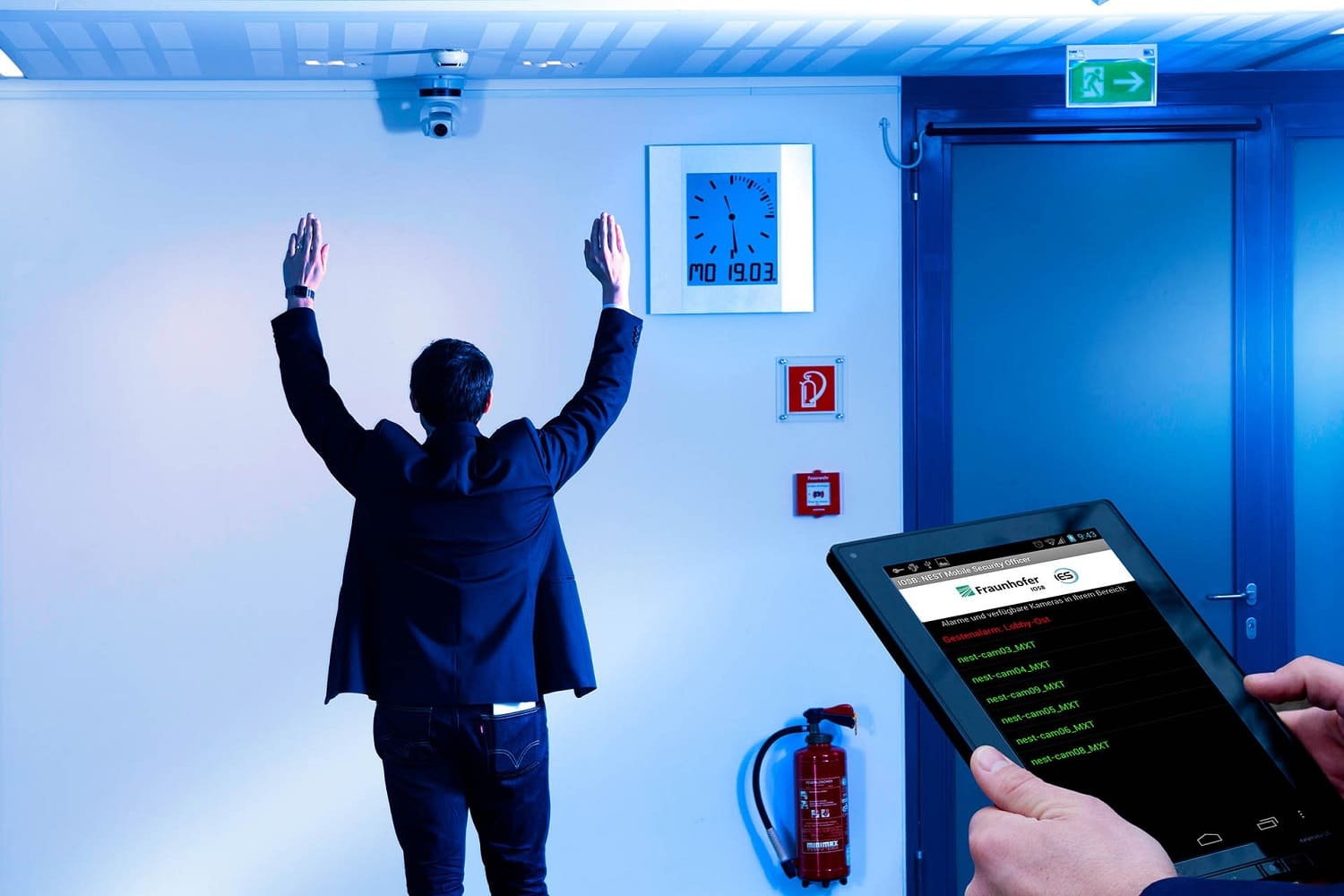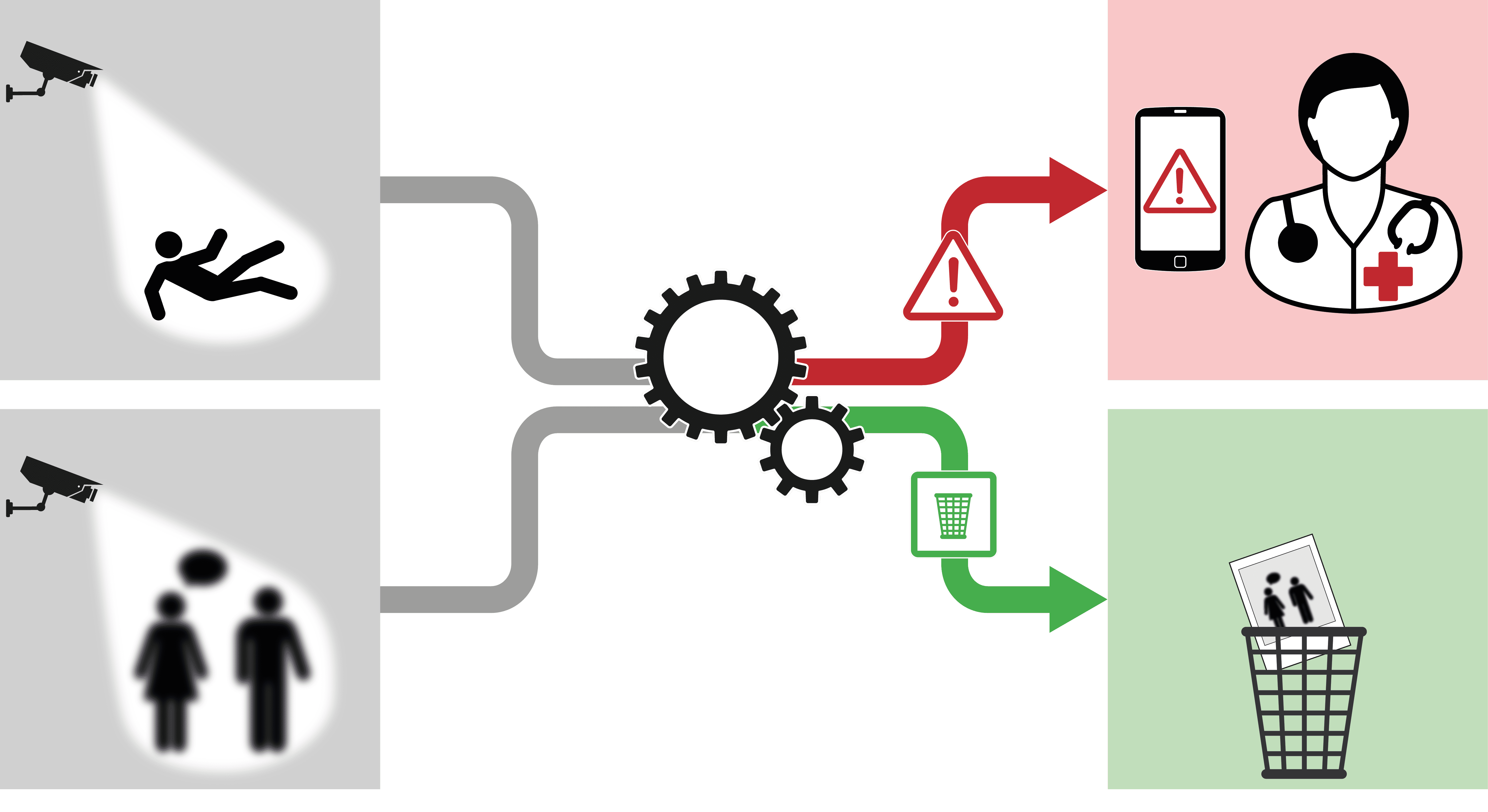Privacy Respecting Video Surveillance introduces a conceptual framework for lawful, smart video surveillance that enforces privacy-related constraints based on the current threat situation and the type of incident that has been detected. It constitutes the first step towards situation-dependent smart video surveillance and helps to increase security while protecting the observed peoples’ privacy.
Motivation and Setup
People in Germany are getting older and older. By 2050, it is estimated that one third of our population will be 65 years or older. The demand for care and nursing staff, which is already almost impossible to meet, is thus growing steadily and rapidly. In the future, modern technologies will help hospital and nursing home staff to keep a better eye on corridors and traffic routes. At the same time, these places represent a particularly sensitive area for privacy. This is why particular importance must be attached to data protection and the NurseEye prototype comes in. With the help of automatic video evaluation, it detects falls and people on the floor and at the same time minimizes the privacy impact for the persons in the protected area. It consists of a camera connected to a display hanging at the point of danger and an app that can be installed on mobile devices such as employees' smartphones.
Although camera-based emergency detection requires special efforts in the area of data protection, it is more efficient than its alternatives. Sensors in the ground or on the body are expensive, do not detect all persons and do not allow remote assessment of the scene of the accident. It is also possible to integrate other emergency detection methods into NurseEye, such as smoke detectors or emergency buttons in individual rooms.
How it works
If NurseEye has detected an emergency, a notification is sent to the smartphones of the nearest employees. As soon as a nurse has confirmed the emergency message, she gets access to the recorded video data in order to be able to carry out an initial situation assessment. At this step, the video data is still anonymous and no persons can be recognized. In this way, labour-intensive false alarms can be completely ruled out and do not lead to an invasion of the privacy of the person concerned.
If the nurse confirms an emergency, NurseEye activates a video chat between the person who fell and the employee who was alerted. This can have a calming effect on the fallen person and assure that help is on its way.
Here too, the implemented data protection prevents employees from storing the video stream in any form on the mobile phone. For the sake of transparency, the display used for video chat shows the processing of the current video data in standby mode.
 Fraunhofer Institute of Optronics, System Technologies and Image Exploitation IOSB
Fraunhofer Institute of Optronics, System Technologies and Image Exploitation IOSB 

